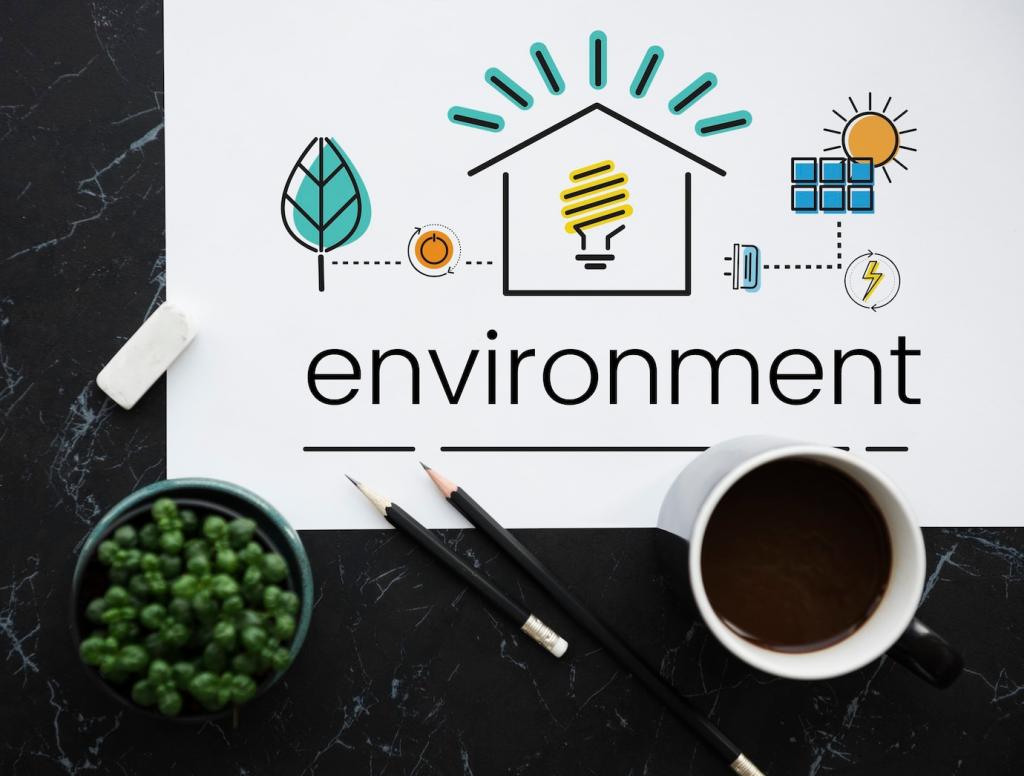Bring Sustainability Home with Beautiful, Honest Materials
Chosen theme: Eco-Friendly Materials for Sustainable Interiors. Explore practical, stylish ways to choose healthier, lower-impact materials that invite warmth, character, and calm into your spaces. Join our community—share your favorite eco find in the comments, subscribe for weekly case studies, and tell us which room you’re tackling next.
Why Eco-Friendly Materials Matter in Everyday Rooms
Cleaner indoor air, calmer minds
Low- and zero-VOC finishes, formaldehyde-free substrates, and plant-based adhesives help reduce headaches, irritation, and lingering odors. After repainting a bedroom with mineral paint, my family noticed deeper sleep and no chemical smell. Try the simple test: if it stings your nose, your air deserves better.
Embodied carbon and the power of reuse
Every product carries a hidden carbon footprint from extraction, manufacturing, and transport. Reclaimed wood, recycled metals, and low-carbon cements cut this dramatically. Compare Environmental Product Declarations, favor local sources, and celebrate materials with a past—they tell stories while easing your home’s climate impact.
Longevity, repairability, and timelessness
Durable, repairable surfaces—solid wood, real linoleum, dense cork—outlast trends and reduce replacement cycles. A scratch that sands out beats a disposable finish every time. Choose classic profiles, avoid fragile coatings, and keep touch-up kits handy so small fixes extend a product’s useful life.
Responsible Woods and Plant-Based Surfaces
01
FSC chain-of-custody ensures forests are managed for biodiversity, workers, and communities. Reclaimed beams and floorboards add patina no stain can fake. We once milled kitchen shelves from a neighbor’s fallen oak; guests always ask about the rings and little nail holes—instant conversation starters.
02
Bamboo renews in three to five years and, when strand-woven, offers impressive hardness. Look for low-emission resins and CARB Phase 2 or TSCA Title VI compliance. Beyond floors, bamboo panels and fabrics bring a clean, organic look without sacrificing strength or day-to-day practicality.
03
Harvested from bark every nine years without harming the tree, cork insulates acoustically and thermally. Our hallway cork tiles softened footfall and warmed the space instantly. Pair with low-VOC finishes, and let the gentle texture guide bare feet from bedroom to breakfast.


Stone, Earth, and Alternative Walls That Breathe
Microporous lime and clay let walls breathe, buffering moisture peaks that can invite mildew. Their velvety, layered look changes beautifully with daylight. We tested swatches near a steamy shower; the limewash dried evenly, leaving a soft, cloudlike finish that felt fresh, not flat.
Stone, Earth, and Alternative Walls That Breathe
A blend of hemp shiv and lime binder, hempcrete locks away carbon while leveling temperature swings and dampening sound. It is non-structural, so think in-fills or interior partitions. Friends reported quieter rooms and steadier comfort, plus a subtle, earthy scent that faded into calm.
Upcycled Glass, Metals, and Plastics with Purpose
Recycled glass surfaces that sparkle responsibly
Countertops and tiles made with high recycled glass content catch light in mesmerizing ways. Prioritize non-toxic binders and sealants to protect air quality. We love pairing them with simple walnut shelves so the texture shines; even small backsplashes become conversation-worthy focal points.
Aluminum and steel with high recycled content
Metals can be recycled repeatedly with minimal quality loss. Request mill certificates and favor powder-coated finishes with low emissions. In kitchens, recycled aluminum toe-kicks and steel shelving add crisp lines while keeping embodied carbon lower than many virgin-material alternatives.
Textiles from ocean-bound plastics, used mindfully
Rugs and upholstery made from recovered PET give waste a second life. Balance durability with care: use microfiber-catching laundry bags or filters to reduce shedding, and mix with natural fibers. Tell us how your family room fabrics are holding up to pets, snacks, and movie nights.
Soft Goods and Finishes: Natural Fibers, Rugs, and Paints
Organic cotton, linen, and hemp with traceable roots
Seek GOTS-certified textiles and low-impact or plant-based dyes. Linen and hemp resist wear, breathe well, and wrinkle elegantly—a lived-in charm that never feels careless. Swap synthetic batting for wool or cotton, and ask retailers about supply chains before you click “buy.”
Wool rugs that buffer sound and capture pollutants
Natural wool fibers can absorb some indoor pollutants and regulate humidity while softening echo. Choose undyed or naturally dyed options with natural latex backings. Our nursery rug still looks fresh after countless story times; the subtle lanolin scent faded into pure coziness.
Low- and zero-VOC paints, stains, and oils
Read the technical data sheet for VOC grams per liter, not just marketing claims. Plant-based oils and waxes offer warm, tactile finishes on wood. Always test a small area first—watch for color shift, sheen, and dry time before committing to a whole wall.

Design Strategies, Maintenance, and Community
Favor mechanical fasteners over permanent glues, label materials as you build, and choose modular pieces that adapt over time. When life changes, you can move, repair, or resell components instead of sending them to the landfill. Your future self will thank you.
Design Strategies, Maintenance, and Community
Look for Greenguard Gold, Cradle to Cradle, EPDs, and ingredient transparency like HPDs or Declare labels. These tools are not perfect, but they help compare options fairly. Screenshot your best finds and share them—crowdsourced research saves everyone time and second-guessing.
